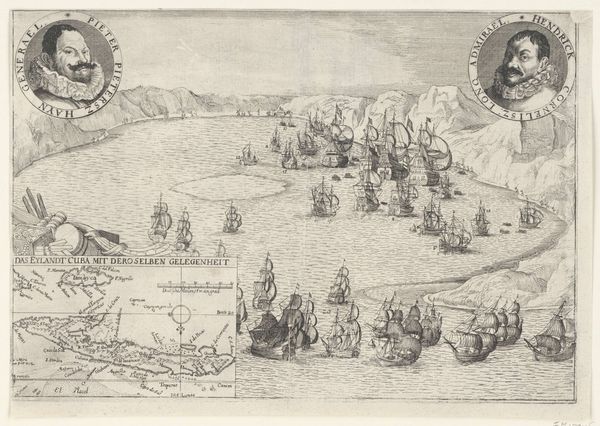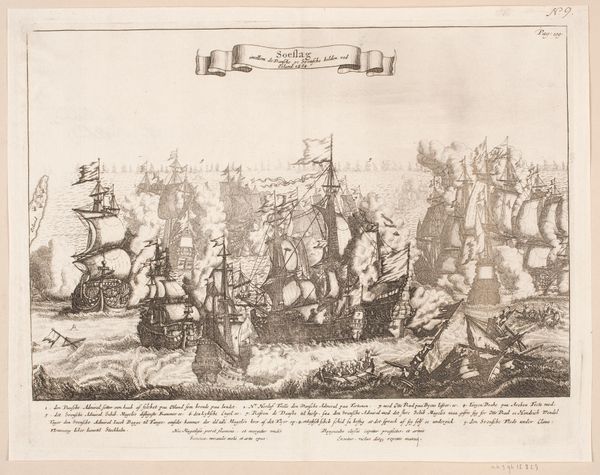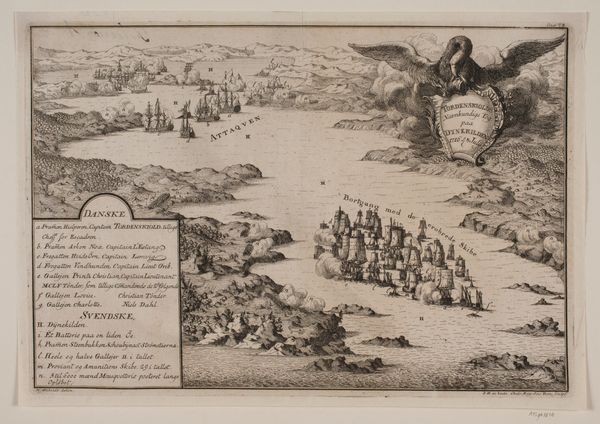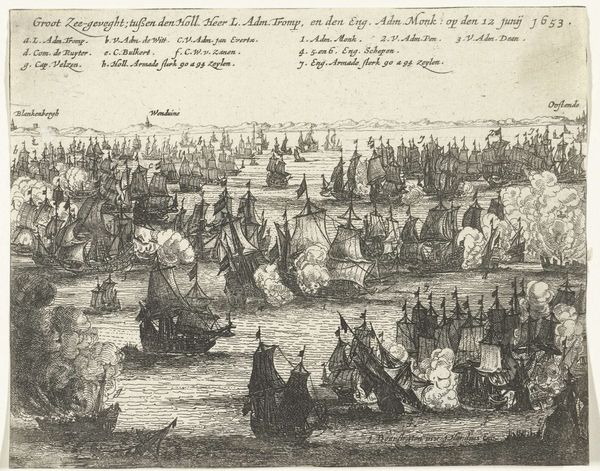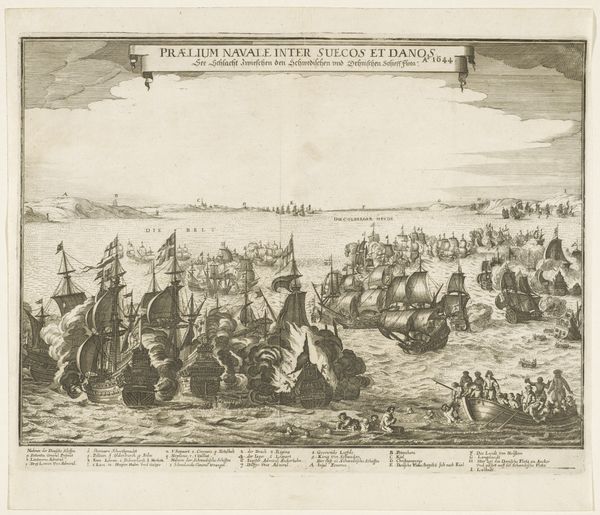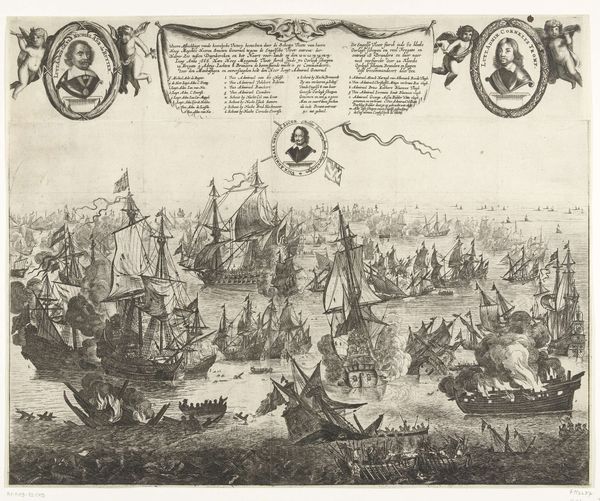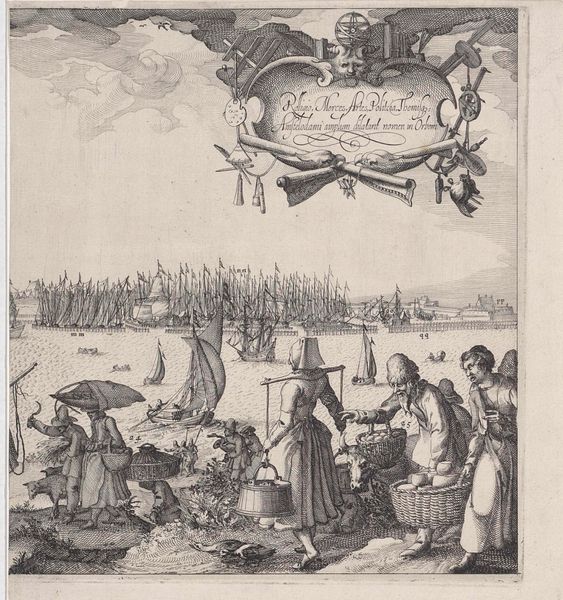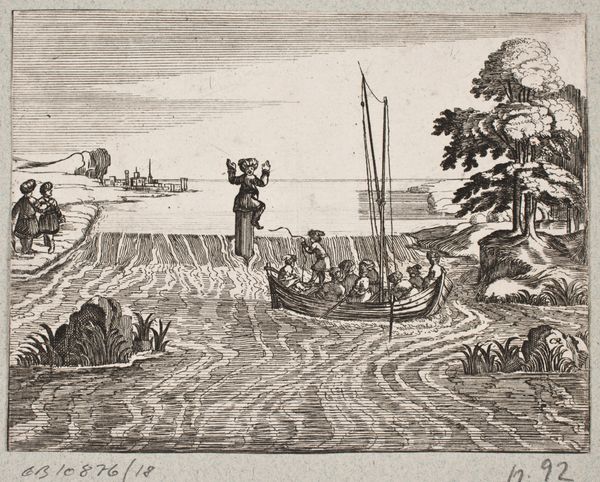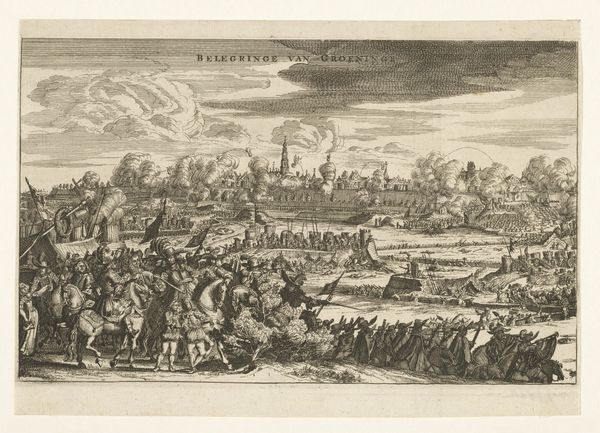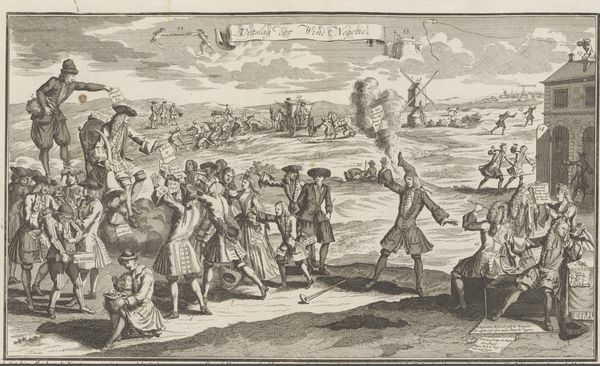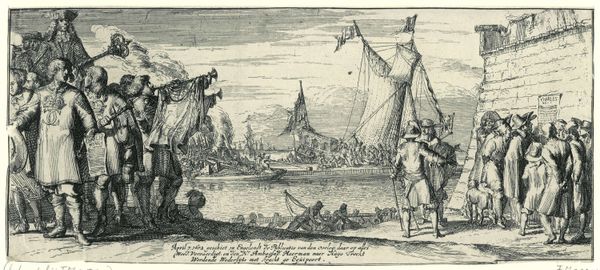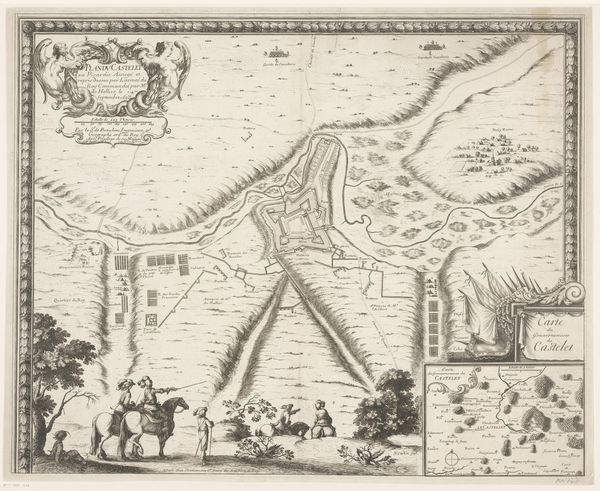
print, engraving
# print
#
landscape
#
history-painting
#
engraving
Dimensions: 252 mm (height) x 325 mm (width) (plademaal)
Curator: Today we are observing a print entitled “Søslag ved Øland og Gulland, 1564” by Johann Husman, made sometime between 1678 and 1682. The work, housed here at the SMK, depicts a naval battle. What's your initial take on this piece? Editor: I'm immediately struck by the density of the lines and the material itself; you can see the effort, almost a frenzy, that went into etching all that detail, chaos. It feels weighty, dense like the smoke portrayed. Curator: That density reflects the historical context. This image attempts to visualize and make legible the intense geopolitical struggle in the Baltic Sea during the 16th century. Naval power, crucial for trade and control, became a popular subject in prints destined for wider audiences. Editor: The detail is impressive. You can see each ship rendered with meticulous care, down to the rigging and cannons, clearly visualizing labor. Yet, there is also the depiction of fire and destruction--a harsh, almost propagandistic viewpoint of what goes into empire-building and its materials. Curator: Absolutely. This isn’t just about objective documentation; it reflects the socio-political interests of the time. The print would have served to communicate power and project the strength of naval forces. The landscape style situates the battle in a recognizable geography and aims for a sense of dramatic spectacle, engaging viewers emotionally and ideologically. Editor: And it cleverly blurs the line between a kind of high-art history painting and a utilitarian military record. This reflects not just the making of history, but a specific effort of visualization that is now rendered as art and accessible to consumers of culture like us. It forces me to ponder: what was consumed then? And what, from this work, is now consumed today? Curator: Excellent points! It really reveals how even images seemingly rooted in factual events can serve to shape public memory and support dominant political narratives. It’s a potent visual tool. Editor: Indeed. Seeing this work from the perspective of materiality, labor, and power shifts our understanding of what this engraving originally represented. We are prompted to analyze how such artifacts gain a position in our collection as cultural and artful items. Curator: A final point that allows us to examine our curatorial efforts with a critical perspective as well. Thanks!
Comments
No comments
Be the first to comment and join the conversation on the ultimate creative platform.
